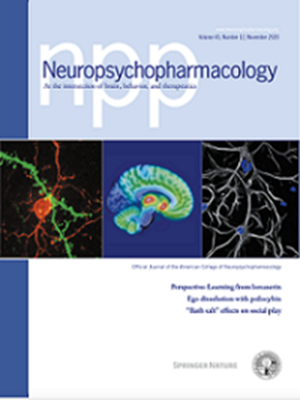Mapping brain-wide activity networks: brainways as a tool for neurobiological discovery
IF 6.6
1区 医学
Q1 NEUROSCIENCES
引用次数: 0
Abstract
Identifying brain-wide neural circuits and targeting these areas for neuropharmacological interventions are significant challenges in contemporary neuroscience. Traditional methods for registering and quantifying fluorescence in brain slices are labor-intensive and struggle to extract functional insights from complex datasets. To address these challenges, we introduce Brainways—an AI-based, open-source software that streamlines neural network identification from digital imaging to network analysis. Brainways facilitates neurobiological research by enabling automatic registration of coronal brain slices to any 3D brain atlas, along with precise quantification of fluorescent markers, such as activity markers and tracers, across brain regions. Brainways incorporates advanced statistical tools to identify neural patterns and functional networks associated with specific experimental contrasts. Trained on rat and mouse brain atlases, Brainways achieves over 93% atlas registration accuracy. The software also allows users to easily adjust the automatic registration through a user-friendly interface for enhanced accuracy. We present two experiment analyses demonstrating Brainways’ capabilities. The first replicates and extends findings from a prior experiment on pro-social behavior in rats, wherein rats learned to free a trapped cagemate from a restrainer under ingroup and outgroup social conditions. Using Brainways, we analyzed approximately 300 times more tissue area than in our previous manual approach. The second experiment utilizes Multiplex RNAscope imaging for whole-brain registration, enabling combined quantification of cell type expression and activity markers. These analyses highlight Brainways’ ability to link specific cell types and their activity to task conditions, providing detailed neural insights. Brainways offers a rapid and accurate solution for large-scale neurobiological projects, creating new opportunities to understand neural networks underlying complex behaviors.

绘制全脑活动网络:脑路作为神经生物学发现的工具。
识别全脑神经回路并针对这些区域进行神经药物干预是当代神经科学的重大挑战。在脑切片中登记和定量荧光的传统方法是劳动密集型的,并且很难从复杂的数据集中提取功能见解。为了应对这些挑战,我们引入了brainways——一种基于人工智能的开源软件,它简化了从数字成像到网络分析的神经网络识别。Brainways通过将冠状脑切片自动注册到任何3D脑图谱,以及精确定量的荧光标记物(如活动标记物和示踪剂),促进了神经生物学研究。Brainways采用先进的统计工具来识别与特定实验对比相关的神经模式和功能网络。Brainways对大鼠和小鼠的大脑图谱进行了训练,达到了93%以上的图谱注册精度。该软件还允许用户通过用户友好的界面轻松调整自动注册,以提高准确性。我们提出了两个实验分析来证明Brainways的能力。第一个实验复制并扩展了先前关于大鼠亲社会行为的实验结果,在该实验中,大鼠学会了在群内和群外社会条件下将被困笼中的同伴从约束器中解放出来。使用Brainways,我们分析的组织面积是之前手工方法的300倍。第二个实验利用Multiplex RNAscope成像进行全脑注册,实现细胞类型表达和活性标记的联合定量。这些分析强调了Brainways将特定细胞类型及其活动与任务条件联系起来的能力,提供了详细的神经见解。Brainways为大规模神经生物学项目提供了快速准确的解决方案,为理解复杂行为背后的神经网络创造了新的机会。
本文章由计算机程序翻译,如有差异,请以英文原文为准。
求助全文
约1分钟内获得全文
求助全文
来源期刊

Neuropsychopharmacology
医学-精神病学
CiteScore
15.00
自引率
2.60%
发文量
240
审稿时长
2 months
期刊介绍:
Neuropsychopharmacology is a reputable international scientific journal that serves as the official publication of the American College of Neuropsychopharmacology (ACNP). The journal's primary focus is on research that enhances our knowledge of the brain and behavior, with a particular emphasis on the molecular, cellular, physiological, and psychological aspects of substances that affect the central nervous system (CNS). It also aims to identify new molecular targets for the development of future drugs.
The journal prioritizes original research reports, but it also welcomes mini-reviews and perspectives, which are often solicited by the editorial office. These types of articles provide valuable insights and syntheses of current research trends and future directions in the field of neuroscience and pharmacology.
 求助内容:
求助内容: 应助结果提醒方式:
应助结果提醒方式:


